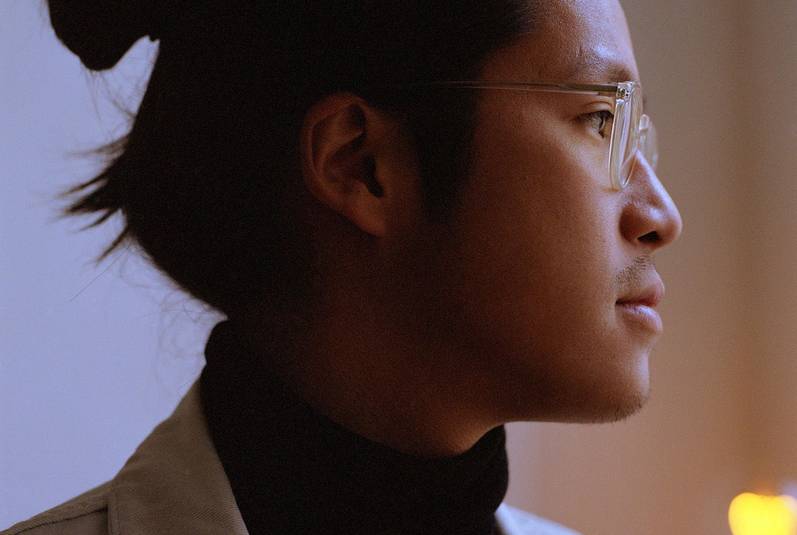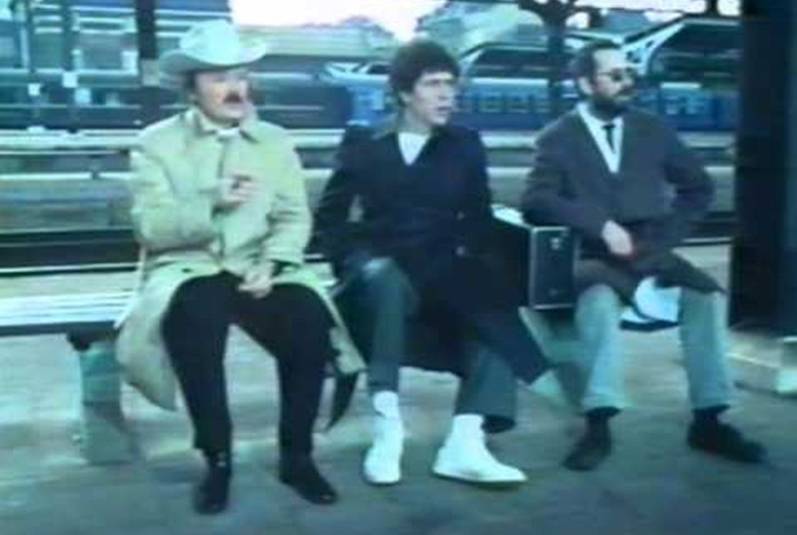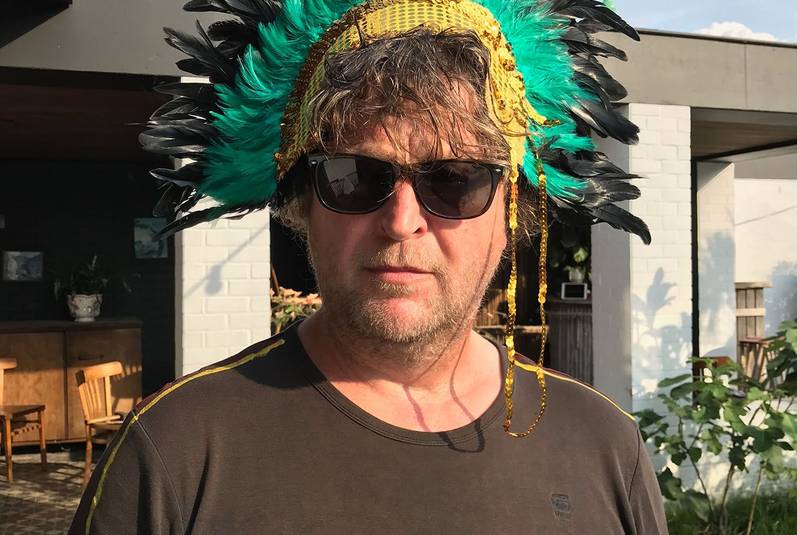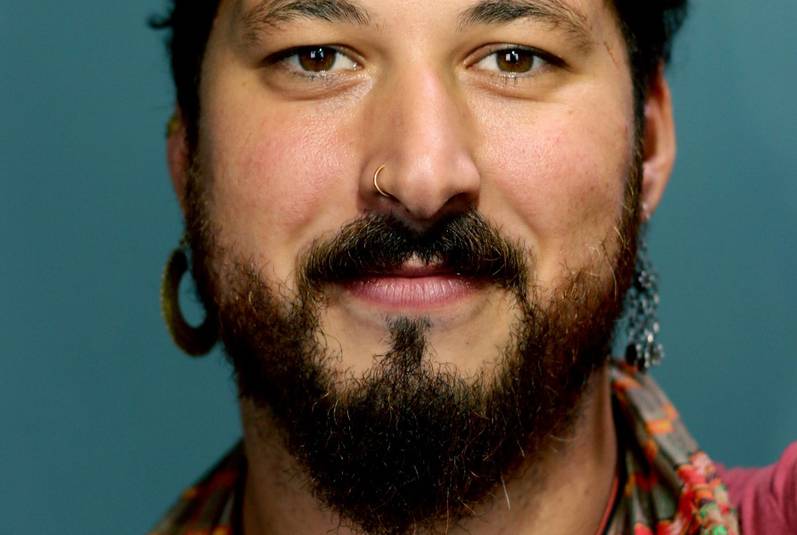“Video killed the radio star, he hit him on the head with his old guitar,” we heard on MTV in 1981. Almost forty years on, the new Brussels festival VKRS#1 is wondering where the music video currently stands. “YouTube is our reality.”
© Joe Vanhoutteghem
| Zwangere Guy sees horrible stuff in "Gorik Pt.1"
"This Is America” is a good song. Just like “Gorik Pt. 1” is a good song. But if it hadn’t been for their exceptional music videos that captured the zeitgeist or made the emotions more palpable, the American rapper Childish Gambino and his Brussels-based colleague Zwangere Guy would not have made as much noise as they did. Over the past few years, there have been many more very significant music videos that are etched on our memory. “Apeshit” by Beyoncé and Jay-Z, for example, “Pynk” by Janelle Monáe, or closer to home, the music videos by Stromae and Charlotte Abramow, whom you know from the pastel-hued but otherwise deceptively light-hearted clips for Angèle. You might even say that the music video has gained importance in what, for the sake of ease, we can call the Age of YouTube.

A$ian rocky
The Liège-born Benoît Do Quang moved to Brussels to study communications. He fell in love with rap during an exchange trip to Canada. He learned how to make music videos on YouTube. Once he had returned to Brussels, he approached the rapper Caballero on a tram and asked him if he could make a music video for him. Under his alias A$ian Rocky, he has filmed one rapper after another, from Roméo Elvis, in whose live band he currently plays guitar, to Zwangere Guy and Blackwave. Do Quang is also a member of the electro-pop band Ulysse, which is currently on hiatus. At VKRS#1, Do Quang is nominated for two music videos: “Gold Veins” by the Antwerp-based rapper Glints and “Lemonade” by Ulysse. He says that he has particularly enjoyed Romain Gavras’s video for “Gosh”, the track by Jamie xx, Tame Impala’s “The Less I Know the Better”, and the music videos by Tyler, The Creator, and Rosalía.
This has not escaped the notice of Video Killed the Radio Star, a new Brussels festival that celebrates the music video as central rather than peripheral. For three days, the festival is focusing on the “art” of the music video and the relationship between sound and images in a broader sense. There will be masterclasses, screenings, DJ sets, and a concert by We Stood Like Kings, who will perform a soundtrack to the film Koyaanisqatsi. And there is a competition for Belgian music video directors in which local artists like A$ian Rocky, Marine Dricot, Brice VDH, and Ahmed Ayed will compete for the best video or coup de cœur of the past year. Those who want to take up the challenge can participate in the category “Speed-clipping” and put together a music video in three days. “Music videos have become essential for artists; just look at the huge success of the videos by Roméo Elvis and Angèle,” says Fanny De Marco, who along with Maxime Pistorio is the driving force behind the festival. “We primarily want to put the filmmakers in the picture, and they don’t necessarily have to be big names. There are absolute gems among some of the smaller productions.”
The title of the festival of course refers to the first music video that was ever shown on the music channel MTV on 1 August 1981. It was a 1979 song by the British new-wave band The Buggles, who spent 50,000 pounds recording their video in only one day in London. Spoiler alert: radio stars did not die, but MTV did unleash a revolution in the industry. Music channels started popping up all over the place. Budgets skyrocketed and music videos became short films; artistic masterpieces that in the best cases were iconic. Our young eyes were not to be exposed to Michael Jackson’s “Thriller”, but there were other incredible music videos, like “Two Tribes” by Frankie Goes to Hollywood, in which Reagan grabs his Russian opponent Chernenko by the cojones, the weeping black Jesus in Madonna’s “Like a Prayer”, the guitar splinters in Nirvana’s “Smells Like Teen Spirit”, and Anthony Kiedis’s wild shaman dance in “Give It Away” by his Red Hot Chili Peppers. Music video directors like Spike Jonze, David Fincher, and Anton Corbijn eventually became celebrated filmmakers.

Gogolplex
The insane visual collective Gogolplex – named after the number with so many zeros that you cannot write it down – is made up of Antoine, Aurélien, and Philémon, three Frenchmen who moved to Brussels ten years ago. Because absolutely nobody was interested in their documentaries – about the geriatric ward of the Saint-Jean hospital and the demolition of the Reyers viaduct, among others – they started experimenting with images that make your head spin. Gogolplex further expanded their disturbed universe alongside the experimental artist Claude Silver & the Sons of the Cosmos in Cinéma Nova, after which they got asked to make videos for Le 77, Juicy, and STIKSTOF. For each of the five videos that they made for the latter, they used a different process, from computer-generated visuals to videogame animation and from 3D to a 360° camera. They were recently invited to present their crazy DIY universe in the group exhibition “Dream Box” at the MIMA. Their latest video is about sex and a horse.
Since then, however, music channels have died, and the internet has devoured music videos. “YouTube is our TV,” says Antoine from Gogolplex, the wacky Brussels-based audio-visual collective that made noted music videos for the Brussels rap crew STIKSTOF and their colleagues Le 77 and Juicy. Does the medium have as much impact? Yes and no. “I don’t see that many exceptional videos,” says Joe Vanhoutteghem, one of the founders of the Brussels film company Czar. Just under ten years ago, Vanhoutteghem drew a lot of attention for his raw music videos for The Hickey Underworld. He recently impressed us with his insane videos for Zwangere Guy, the aforementioned “Gorik Pt. 1”, and “Wie is Guy?”, a surrealist trip across Brussels that he conceived with his colleague Koen Mortier under their totally twisted alias Lionel Goldstein. “I miss good ideas,” he says. “Is it due to the creativity of the artists or the interference of the label? My sense is that everybody just wants to be hip or copy one another. You have to do more than just illustrate the song.” He thinks that the best music videos were made fifteen or twenty years ago, when aspiring directors like Jonathan Glazer and Michel Gondry made their mark. “There is a reason that they became interesting filmmakers.”

Joe Vanhoutteghem
In 1999, Joe Vanhoutteghem and director Koen Mortier (22 mei, Ex drummer) founded the Belgian branch of the Czar production company. Based in Molenbeek, they raked in international awards for their adverts, even in Cannes and across the canal. Vanhoutteghem started out as a film animator, but then developed into an all-round director, with a penchant for the poetic and the surreal. For example, he had Arno play a down-and-out butcher in “Chic et pas cher”. He collaborated with photographer and DOP Nicolas Karakatsanis to make a number of raw music videos for The Hickey Underworld, which illustrate his love of dark music video directors like Chris Cunningham and Jonathan Glazer. Under the alias Lionel Goldstein, he and Mortier give free rein to their craziest and most absurd ideas. In “Wie is Guy?”, for example, the Brussels rap king Zwangere Guy eats God’s intestines, in the form of blood pudding, and he is then electrocuted.
Nevertheless, you could argue that the internet has led to a boost in creativity, and technological advances have ensured that music videos are now more democratic. In principle, the only things you need are a smartphone and a good idea. The Brussels-based musician and music video director Benoît Do Quang alias A$ian Rocky did not need 7 million dollars – the excessive amount that Michael and Janet Jackson spent on “Scream” – to make the music video for “Bruxelles arrive”, which put Roméo Elvis and after him the whole Brussels rap scene on the map. It was filmed and edited for 20 euro, and now has more than 17 million views. “That is typically Brussels: creating something beautiful on a shoestring budget.” The boys of Gogolplex agree: “Our clips don’t cost us a cent, just a lot of time.”
Thanks to our phones, videos are in everyone’s back pocket, but they are also a throwaway product in a culture that suffers from a short attention span. So you have to be noticed. “You are a grain of sand between millions of others,” says the Tunisian-Brussels theatermaker and music video director Ahmed Ayed, who was noted for his work for Ammar 808. It is easy to discover and approach somebody via social media, though. In theory, labels, producers, and all kinds of other awkward mediating figures are superfluous. For example, when she was just starting out, Angèle convinced the young Belgian photographer Charlotte Abramow to make her music videos after they had started following each other on Instagram.

Ahmed Ayed
The Tunisian-born Ahmed Ayed moved to Belgium when he was eighteen to study theatre. His cinematic plays, including an intriguing, dark version of Alice in Wonderland, eventually led him to music videos. As a young kid, he and his sister would imitate the choreographies of Michael Jackson and Destiny’s Child that he would watch via pirated satellite dishes in Tunisia. At VKRS#1, Ayed is nominated for two videos: “Allah by Night”’ by the French Tunisian electronic musician Mettani and “Ain essouda” by Ammar 808, the Brussels electronica wizards who blend beats with Maghreb sounds. The virile men with ram heads in “Ain essouda”, Arabic for “black eye”, were inspired by the ram fights in the Arab world. Visually, there are also knods to David Fincher’s Fight Club. He says that Mark Romanek’s music video for “Closer” by Nine Inch Nails is his favourite music video.
“Videos have a bigger impact than they did in the past,” Do Quang believes. “We live in a visual culture, people want to see everything. A huge part of the success of rappers is due to the visual language that they use in their music videos. People want to reflect their charisma.” Antoine from Gogolplex concurs: “You can find videos on YouTube about absolutely everything. We don’t read any more, we just watch. That is our reality.”
Because you don’t necessarily need the 6 billion views that “Despacito” got on YouTube, you can experiment as much as you want: there are no rules. “We listen to what the artist says and then we do whatever we want,” says Antoine from Gogolplex, which has positioned itself against the mainstream with experimental, artistic, and utterly absurd videos. Belgians, and especially people from Brussels, can really indulge in their love of surrealism. In a playful and also feminist way in the videos by Charlotte Abramow, and in a violent way in those of Lionel Goldstein. “We don’t consciously look for that absurdity,” says Antoine. “ Look around, reality is full of absurdities.” Vanhoutteghem agrees: “Being the urban jungle that it is, Brussels is extremely interesting visually. I was recently filming in the Netherlands, and it was definitely less inspiring.”
So, what makes making music videos so interesting? “Their freedom,” Ahmed Ayed concludes. “You might be making a short film, something totally abstract, an animated film, you can tell a story or not, stick to the lyrics or do something completely different. It is an audio-visual poem.” “Something magical happens when you combine music and video. In the best cases, it transcends the sum of its parts,” agrees Do Quang. “I hope we can make this clear with this first edition,” Fanny De Marco says. “Hopefully many artists will meet each other here, and the festival will result in beautiful new music videos.”
> VKRS#1. 9 > 11/5, Les Riches-Claires & Palace
Bekijk het interview met Koen Mortier (CZAR en regisseur van 'Wie is Guy') in Downtown.
Fijn dat je wil reageren. Wie reageert, gaat akkoord met onze huisregels. Hoe reageren via Disqus? Een woordje uitleg.